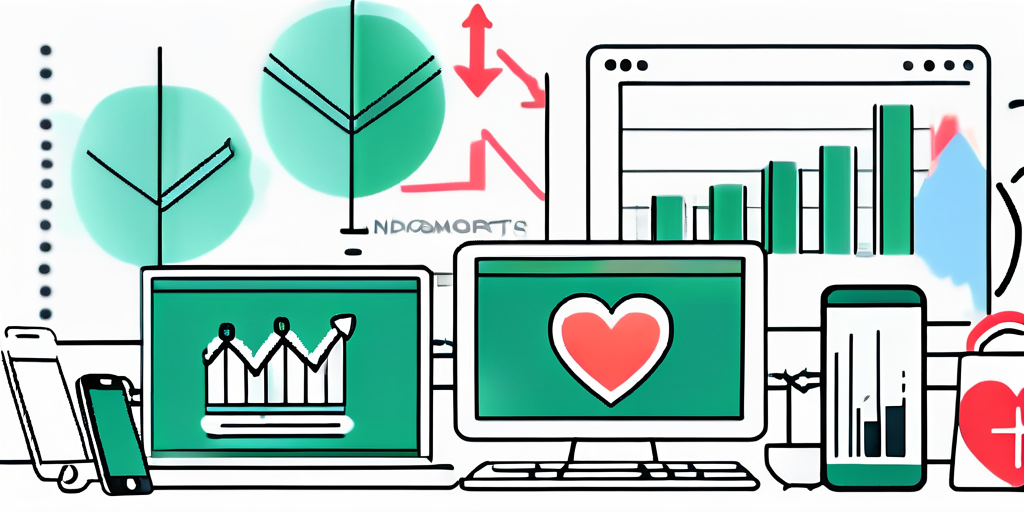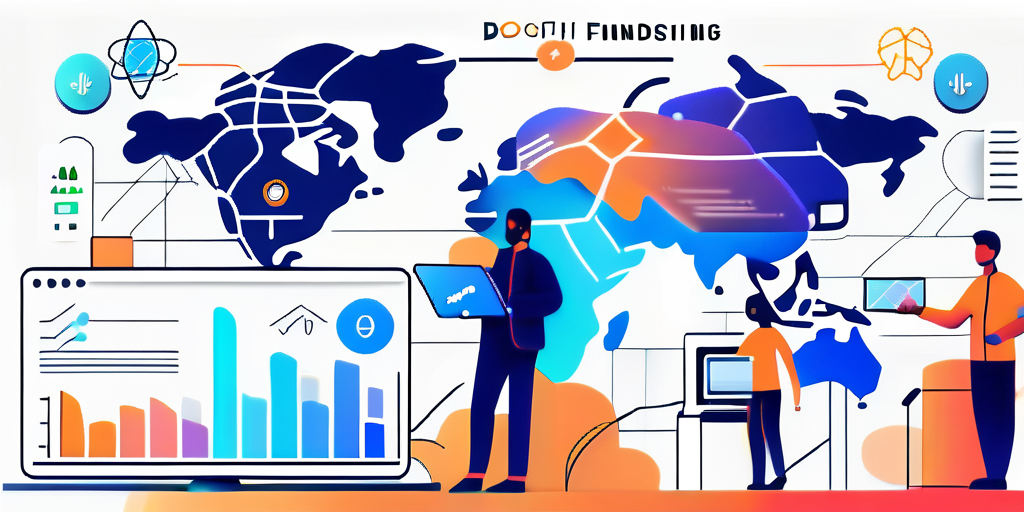The Best Fundraising Software for Nonprofits: A Comprehensive Guide

Nonprofit organizations rely on fundraising to support their mission and make a positive impact in their communities. In today’s digital age, fundraising software has become a critical tool for nonprofits to streamline their efforts and maximize their fundraising potential. This comprehensive guide will provide you with a detailed understanding of fundraising software, how to evaluate different options, implement them in your organization, and maximize their benefits.
Understanding Fundraising Software
Fundraising software is a specialized tool designed to assist nonprofit organizations in managing and executing their fundraising activities. It enables nonprofits to automate various tasks, such as donor management, event planning, online giving, and campaign tracking. By using fundraising software, nonprofits can save time and resources while significantly increasing their fundraising efficiency.
The Role of Fundraising Software in Nonprofits
Fundraising software plays a crucial role in nonprofit organizations by providing them with a centralized platform to manage their fundraising efforts. It helps nonprofits streamline their processes, improve donor relationships, and enhance their overall fundraising strategy. With fundraising software, nonprofits can effectively track donations, engage donors, and evaluate the success of their fundraising campaigns.
Key Features to Look for in Fundraising Software
When evaluating fundraising software options, there are several key features to consider. Firstly, robust donor management capabilities are essential. The software should allow nonprofits to capture and store donor information, track their giving history, and segment them based on various criteria.
Secondly, event management tools are crucial for nonprofits that frequently organize fundraising events. The software should enable nonprofits to manage event registration, ticketing, and communication with attendees. This includes features like sending automated event reminders, tracking RSVPs, and managing event logistics.
Additionally, online fundraising functionality is a must. Nonprofits should look for software that offers customizable donation forms, online giving portals, and integration with popular payment processors. This allows donors to easily contribute to the cause through secure online transactions, while also providing nonprofits with a seamless way to track and acknowledge donations.
Furthermore, fundraising software should have built-in communication tools to help nonprofits engage with their donors effectively. This can include features like email marketing campaigns, personalized thank-you messages, and automated donor follow-ups. By nurturing donor relationships through targeted and timely communication, nonprofits can build trust and loyalty among their supporters.
Lastly, reporting and analytics features are vital for assessing the success of fundraising efforts. The software should provide comprehensive reports on donation trends, campaign performance, and donor engagement metrics. This data allows nonprofits to gain valuable insights into their fundraising strategies, identify areas for improvement, and make data-driven decisions to maximize their impact.
In conclusion, fundraising software is a powerful tool that empowers nonprofit organizations to optimize their fundraising efforts. By leveraging its features, nonprofits can streamline their operations, engage donors more effectively, and ultimately raise more funds to support their important missions.
Evaluating the Top Fundraising Software
With countless fundraising software options available, it’s crucial to understand how to evaluate them effectively. Consider the following criteria when choosing the best software for your nonprofit:
Criteria for Choosing the Best Software
- Ease of use: Look for software with an intuitive user interface and user-friendly navigation.
- Scalability: Ensure that the software can grow with your organization’s evolving needs.
- Integration capabilities: Check if the software can integrate with your existing systems, such as CRM or accounting software.
- Customer support: Evaluate the level of customer support and training offered by the software provider.
- Cost-effectiveness: Consider the pricing structure and determine if it aligns with your organization’s budget.
Pros and Cons of Popular Fundraising Software
Let’s take a closer look at some of the most popular fundraising software options and weigh their pros and cons.
One popular fundraising software option is “DonorPerfect.” This software is known for its user-friendly interface, making it easy for even the least tech-savvy individuals to navigate. With its intuitive design, organizations can quickly learn how to use the software and maximize its features without extensive training.
Another key advantage of DonorPerfect is its scalability. As your nonprofit grows and expands its fundraising efforts, this software can easily accommodate your evolving needs. Whether you’re starting small or have a large donor base, DonorPerfect can handle the volume of data and transactions efficiently.
However, one drawback of DonorPerfect is its limited integration capabilities. While it offers some integration options, it may not seamlessly integrate with all your existing systems. Before committing to this software, ensure that it can integrate with your CRM or accounting software to avoid any potential data discrepancies or manual workarounds.
Another popular fundraising software worth considering is “Bloomerang.” This software is highly regarded for its robust customer support and training offerings. The Bloomerang team is known for their responsiveness and willingness to assist users with any questions or issues that may arise.
Furthermore, Bloomerang offers a variety of training resources, including webinars and tutorials, to help nonprofits make the most of their software. This level of support can be invaluable, especially for organizations with limited technical expertise or resources.
However, one downside of Bloomerang is its pricing structure. While it offers a range of features and benefits, it may not be the most cost-effective option for small nonprofits with limited budgets. Before committing to Bloomerang, carefully evaluate your organization’s financial resources and determine if the pricing aligns with your long-term sustainability goals.
Review of Commonly Used Nonprofit Fundraising Tools
Here, we review five popular fundraising tools: Classy, Funraise, Blackbaud Raiser’s Edge NXT, Bloomerang, and DonorPerfect. Each tool has its strengths and challenges, catering to different needs within the nonprofit sector.
1. Classy
Pros: Classy is renowned for its visually appealing and user-friendly interfaces, making it a favorite among nonprofits looking to create compelling fundraising campaigns. It supports a wide range of fundraising methods including peer-to-peer, events, and crowdfunding. Classy also integrates smoothly with several marketing and analytics platforms, enhancing its functionality.
Cons: The main drawback of Classy is its pricing, which can be higher than some other options, potentially making it less accessible for smaller organizations with limited budgets.
2. Funraise
Pros: Funraise offers a comprehensive set of tools that are particularly effective for engaging with younger donors. Features like text-to-give, peer-to-peer fundraising, and innovative donor management capabilities help nonprofits to enhance donor relationships and retention. Its integration capabilities with social media platforms are also a strong point.
Cons: While Funraise provides a robust feature set, some users report that the initial setup can be complex and may require more technical expertise.
3. Blackbaud Raiser’s Edge NXT
Pros: This tool is a powerhouse for donor management and analytics. Blackbaud Raiser’s Edge NXT is ideal for larger nonprofits that need extensive data management capabilities. It offers deep customization options and robust reporting features to track and analyze fundraising activities.
Cons: The complexity of Raiser’s Edge NXT can be a barrier for some users, and the cost can be prohibitive for smaller nonprofits. Additionally, some users find the software to be less intuitive compared to newer platforms.
4. Bloomerang
Pros: Bloomerang is highly praised for its focus on donor retention and engagement. It offers an intuitive interface, integrated email marketing tools, and insightful donor reports that help nonprofits understand and improve donor relationships.
Cons: Bloomerang’s event management features are somewhat limited, which might be a drawback for organizations that host numerous or complex events.
5. DonorPerfect
Pros: DonorPerfect is versatile and scalable, making it suitable for nonprofits of all sizes. It excels in customization, allowing organizations to tailor the software to their specific needs. The platform also integrates well with other systems, which is a significant advantage for comprehensive fundraising efforts.
Cons: Some users find that while DonorPerfect is highly customizable, it can require considerable time to set up and may necessitate ongoing adjustments to optimize its use.
Each of these fundraising tools offers unique features and capabilities, making them suitable for different types of nonprofit organizations. When choosing the right software, consider your specific needs, budget, and the size of your donor base. It’s also beneficial to take advantage of free trials or demos offered by these platforms to better understand their functionality and fit with your organization’s strategies. By selecting the right tool, nonprofits can effectively enhance their fundraising efforts, engage more deeply with donors, and achieve their mission more successfully.
Implementing Fundraising Software in Your Nonprofit
Implementing fundraising software requires careful planning and execution. Follow these steps to ensure a successful integration:
Steps to Successfully Integrate Fundraising Software
- Establish your goals: Define your organization’s fundraising objectives and align them with the software’s capabilities.
- Select the right software: Based on your evaluation, choose the software that best meets your nonprofit’s needs.
- Create an implementation plan: Develop a detailed plan outlining the steps, timeline, and responsible parties for software implementation.
- Migrate data: Transfer your existing donor and fundraising data to the new software, ensuring its accuracy and integrity.
- Train staff: Provide comprehensive training to your team members to ensure they can effectively utilize the software’s features.
- Monitor progress: Continuously monitor and evaluate the software’s performance, making any necessary adjustments along the way.
Training Staff on New Fundraising Software
Training your staff on the new fundraising software is crucial for successful implementation. Consider the following tips to ensure a smooth transition:
- Provide comprehensive training sessions tailored to different user roles and responsibilities.
- Offer ongoing support and access to training resources, such as video tutorials or user manuals.
- Encourage staff members to ask questions and provide feedback to continuously improve their understanding of the software.
- Consider appointing a software champion within your organization who can serve as a go-to person for staff inquiries.
Additionally, it is important to create a positive learning environment during the training sessions. Foster an atmosphere where staff members feel comfortable asking questions and seeking clarification. Encourage open dialogue and collaboration among team members to enhance their understanding and proficiency with the fundraising software.
Furthermore, consider organizing hands-on workshops or role-playing exercises to allow staff members to practice using the software in a simulated environment. This will help them gain confidence and familiarity with the system, reducing the learning curve and increasing their overall efficiency.
Another effective strategy is to provide ongoing support after the initial training sessions. This can include regular check-ins with staff members to address any concerns or challenges they may be facing. Additionally, consider creating a dedicated support channel, such as an email address or a help desk, where staff members can reach out for assistance whenever needed.
Lastly, keep in mind that different staff members may have varying levels of technological proficiency. Some may be more tech-savvy and adapt quickly to the new software, while others may require more time and support. Tailor your training approach accordingly, providing additional resources or one-on-one sessions for those who need it.
Maximizing the Benefits of Fundraising Software
While implementing fundraising software is a significant step, nonprofits must also focus on leveraging its benefits fully:
Leveraging Software for Effective Fundraising Campaigns
Use the fundraising software’s features to create and execute impactful campaigns. Personalize your outreach, target specific donor segments, and track campaign results in real-time. By leveraging the software’s capabilities, you can increase donor engagement, boost fundraising outcomes, and enhance your organization’s overall impact.
Utilizing Software Analytics for Fundraising Success
Take advantage of the software’s reporting and analytics tools to gain valuable insights into your fundraising efforts. Track donor behavior, identify trends, and measure the success of different fundraising strategies. By analyzing data, you can make informed decisions and continuously optimize your fundraising initiatives.
Future Trends in Fundraising Software
Fundraising software continues to evolve, driven by advancing technology and changing nonprofit landscape. Here are some future trends to watch:
How Technology is Shaping Fundraising Software
As technology advances, fundraising software is becoming more sophisticated. Artificial intelligence and machine learning capabilities are being integrated into fundraising software, enabling nonprofits to personalize donor experiences, automate administrative tasks, and predict donor behavior more accurately.
Preparing Your Nonprofit for Future Fundraising Software Innovations
To stay ahead, nonprofits must remain agile and adaptable to future fundraising software innovations. Keep a pulse on emerging technologies, engage with software providers, and prioritize staff training to harness the full potential of upcoming tools and features.
By understanding fundraising software, evaluating different options, implementing them effectively, and maximizing their benefits, nonprofits can significantly enhance their fundraising efforts and make a lasting impact in their communities. Choose the right fundraising software for your nonprofit, and take your fundraising strategy to new heights!
As you explore the best fundraising software to elevate your nonprofit’s efforts, remember that a strong digital presence is equally crucial for sustainable growth. BlueWing, a seasoned paid media management agency, is dedicated to helping nonprofits like yours harness the power of paid social media and search, including the Google Ad Grants program. With our expertise, weekly updates, and a history of exceeding industry benchmarks, we’re here to amplify your impact. Contact us today to learn how we can build a robust digital presence that complements your fundraising strategy.





